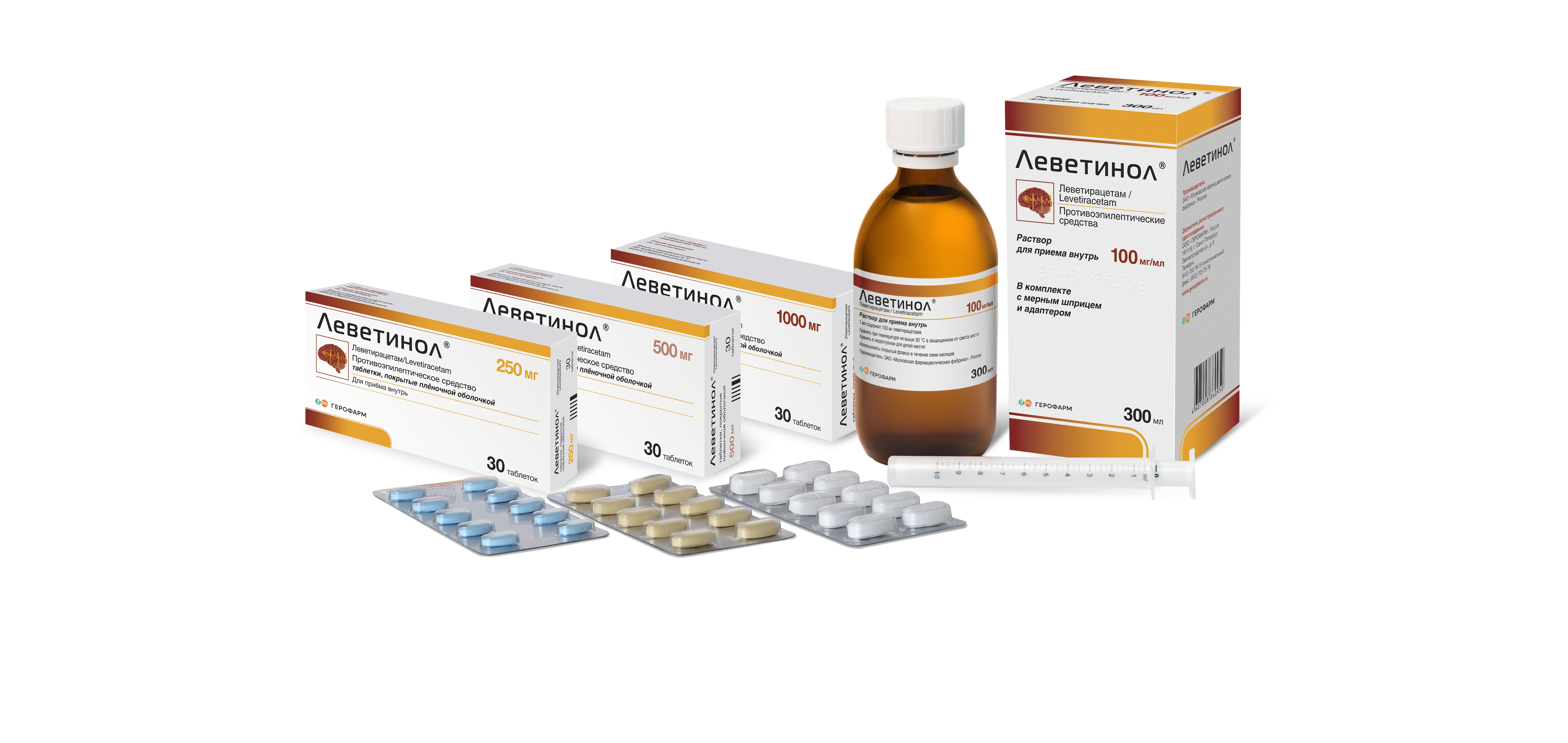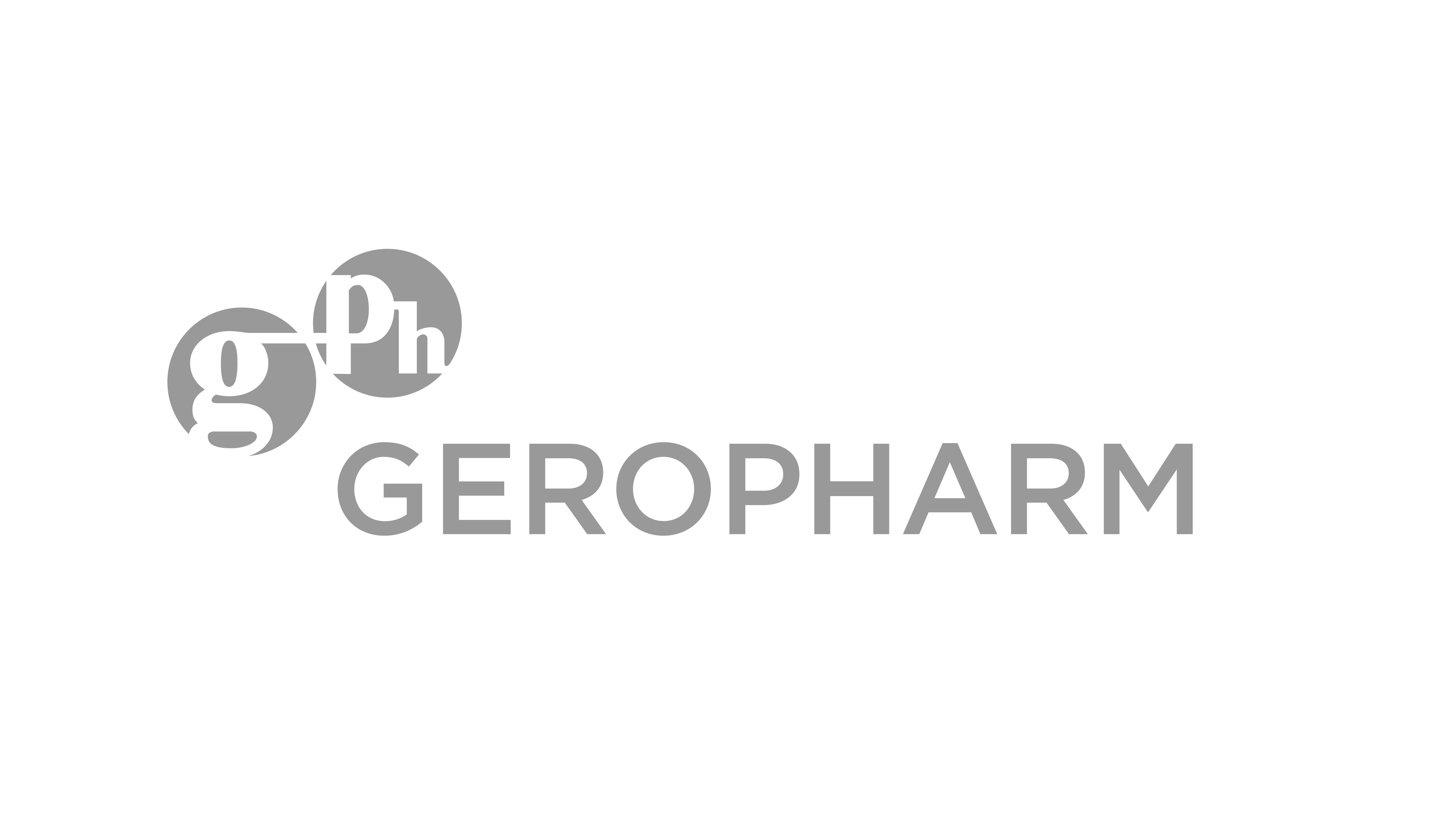Levetinol® is a novel agent to treat different forms of epilepsy. It differs from AED by a unique combination of effectiveness and good tolerability. It is used in monotherapy and in combination therapy of focal and generalized forms of epilepsy. Levetinol® is used in initial therapy. It promotes fast achievement of an effective dose. Levetinol® is a high level of safety and adherence to treatment.
This drug is a prescribed medicine. It can be dispensed on a doctor's prescription only. There are contraindications. Please read the patient information leaflet. Do not use the medicinal agent if it was not prescribed by your treating physician. Always follow the patient information leaflet and your doctor’s recommendations.
The mechanism of action of levetiracetam is not clearly understood yet. However, it differs from that of other antiepileptic agents. It has been shown in vitro and in vivo experiments that levetiracetam does not affect the basic properties of a cell and normal nervous transmission.
Multimodal unique mechanism of action of levetiracetam
According to in vitro examinations, levetiracetam affects the intra-neuronal concentration of Ca ions partially braking the current through N-type channels and reducing calcium release from intra-neuronal depots. In addition to that, levetiracetam partially restores ionic currents through GABA- and glycine-dependent channels reduced by zinc and beta-carbolines. Moreover, in vitrostudies have shown that levetiracetam binds to specific binding sites in rat brain. It is synaptic vesicle glycoprotein 2A which is involved in the process of vesicle trafficking and exocytosis of neurotransmitters. Levetiracetam and its analogues binding to the synaptic vesicle glycoprotein 2A show anticonvulsant efficacy against audiogenic seizures in mice. The stronger is the connection, the higher is the activity. According to these data, binding of levetiracetam to synaptic vesicle glycoprotein 2A exhibits its anticonvulsant activity.
This drug is a prescribed medicine. It can be dispensed on a doctor's prescription only. There are contraindications. Please read the patient information leaflet. Do not use the medicinal agent if it was not prescribed by your treating physician. Always follow the patient information leaflet and your doctor’s recommendations.
Tablet dosage forms
Drug trade name: LEVETINOL®
International Non-proprietary Name: levetiracetam
Dosage form: film-coated tablets, 250 mg, 500 mg, 1,000 mg
Pharmacotherapeutic group: antiepileptic agent
ATC code: N03AX14
Pharmacodynamics: Levetiracetam is a pyrrolidone derivative (S-enantiomer of alpha-ethyl-2-oxo-1-pyrrolidine-acetamide), which differs in its chemical structure from the known antiepileptic drugs. According to in vitro examinations, levetiracetam affects the intra-neuronal concentration of Ca ions partially braking the current through N-type channels and reducing calcium release from intra-neuronal depots. The antiepileptic activity of the drug is confirmed in relation to both partial and generalized epileptic seizures in a human supporting its wide spectrum of pharmacological action.
Indications for use: levetiracetam is indicated as monotherapy in the treatment of partial onset seizures with or without secondary generalization in adults and adolescents from 16 years of age with newly diagnosed epilepsy. It is indicated as adjunctive therapy – in the treatment of partial onset seizures with or without secondary generalization in patients from 6 years of age with epilepsy. – in the treatment of myoclonic seizures in patients from 12 years of age with juvenile myoclonic epilepsy – in the treatment of primary generalized tonic-clonic seizures in patients from 12 years of age with idiopathic generalized epilepsy
Contraindications: hypersensitivity to levetiracetam or pyrrolidone derivatives and other drug components. Not for children under 6 years of age.
Directions for use and dosage: dosage regimen. Monotherapy in adults and adolescents from 16 years of age: The recommended initial dose is 250 mg two times a day. In two weeks, it is increased reaching the initial therapeutic dose of 500 mg twice a day. It can be increased in increments of 250 mg twice a day every two weeks based on the clinical response. Maximum dose: 1,500 mg twice a day. Adjunct therapy in adults (≥ 18 years of age) and adolescents (12–17 years of age) with the body mass of 50 kg and over Initial therapeutic dose is 500 mg twice a day. The dose can be used from the first day of treatment. Depending on the clinical response and tolerability, it can be increased in increments to 1,500 mg twice a day. The dose can be increased or decreased by 500 mg twice a day every 2–4 weeks.
Side effect: the most common reported adverse effects included nasopharyngitis, somnolence, headache, weakness and dizziness. The safety profile of levetiracetam is basically the same depending on the age (in adults and children). It does not depend on approved indications (different types of epilepsy). Individual adverse reactions: there is an increased risk for anorexia in concomitant use of levetiracetam and topiramate. In some cases, alopecia was reversible following withdrawal of levetiracetam. Form of presentation: Film-coated tablets 250 mg, 500 mg, 750 mg, 1,000 mg.
Shelf-life: 3 years.
Dispensing conditions: by prescription.
Registration number: ЛП 002021.
The firm accepting claims:
GEROPHARM
Business center "Nevskaya Ratusha" 11B, Degtyarny lane, St. Petersburg, 191144, Russian Federation
Phone: +7 (812) 703-79-75 , Fax: +7 (812) 703-79-76Toll-free number: 8-800-333-4376 (free call across the Russian Federation)
Website: www.geropharm.com
Please read the patient information leaflet for detailed information on the drug.
Oral solution
Trade name: LEVETINOL®
International Non-proprietary Name: levetiracetam
Dosage form: transparent almost colorless solution with characteristic odor.
Composition: active substance – 100 mg of levetiracetam; excipients – sodium citrate dihydrate, citric acid monohydrate, methyl parahydroxybenzoate, propyl parahydroxybenzoate, ammonium glycyrrhizinate, glycerin, maltitol liquid, potassium acesulfame, water purified to 1.00 ml
Pharmacotherapeutic group: antiepileptic agent
Pharmacological action: the mechanism of action of levetiracetam is not clearly understood yet. However, it differs from that of other antiepileptic agents. Levetiracetam does not affect the basic properties of a cell and normal nervous transmission. Levetiracetam affects the intra-neuronal concentration of Ca ions partially braking the current through N-type channels and reducing calcium release from intra-neuronal depots. It partially restores ionic currents through GABA- and glycine-dependent channels reduced by zinc and beta-carbolines. Binding of levetiracetam to synaptic vesicle glycoprotein 2A exhibits its anticonvulsant activity. It exhibits antiepileptic effect on many models of partial and primarily generalized seizures in animals with the respective antiepileptic effect.
Indications: Monotherapy: partial seizures with or without secondary generalization in newly diagnosed patients over 16 years of age. Combined therapy: partial seizures with or without secondary generalization in newly diagnosed patients over 6 years of age; myoclonic seizures in patients from 12 years of age with juvenile myoclonic epilepsy; primary generalized tonic-clonic seizures in patients from 12 years of age with idiopathic generalized epilepsy
Contraindications: hypersensitivity to levetiracetam or pyrrolidone derivatives and other drug components; fructose intolerance; children under 1 moth of age. With caution: elderly patients (over 65 years of age); decompensated liver diseases; kidney failure.
Directions for use and dosage: per os, irrespective of food intake. A daily dose is divided into two similar parts.
Monotherapy (adults and adolescents over 16 years of age): Titration with an increment of 250 mg 2 times a day for 2 weeks: initial dose – 250 mg 2 times a day; maintenance dose – 500 mg 2 times a day; maximum dose 1,500 mg 2 times a day
Adjunct therapy:
- adults ≥ 18 years of age and adolescents 12–17 years of age with body mass of over 50 kg: initial dose of 500 mg 2 times a day; maximum dose 1,500 mg 2 times a day. A dose can be changed by 500 mg 2 times a day every 2–4 weeks;
- children from 6 months to 11 years of age, adolescents of 12–17 years of age with body mass of at least 50 kg: initial dose of 10 mg/kg of body mass 2 times a day; maximum dose 30 mg/kg 2 times a day. A dose can be changed by 10 mg/kg of body mass 2 times a day every 2 weeks;
- children and adolescents with the body weight over 50 kg have the same dose as adults;
- children 1 moth – 6 months of age: initial therapeutic dose is 7 mg/kg 2 times a day; maximum dose is 21 mg/kg 2 times a day. A dose is changed by not more than ±7 mg/kg 2 times a day every 2 weeks.
Recommendations on storage: 3 years. Store protected from light at not higher than 30 °C.
Dispensing conditions: by prescription.
Levetinol® is used in different dosage forms. It is convenient for patients with different body weights and various forms of epilepsy. For convenience of doctors and patients, a breaking line is available. It is used to divide a tablet easily whereas a dosage mark (250, 500, 1,000) on every tablet surface ensures strict treatment adherence.
The agent is intended for treatment of children over 1 month of age as an oral solution.



